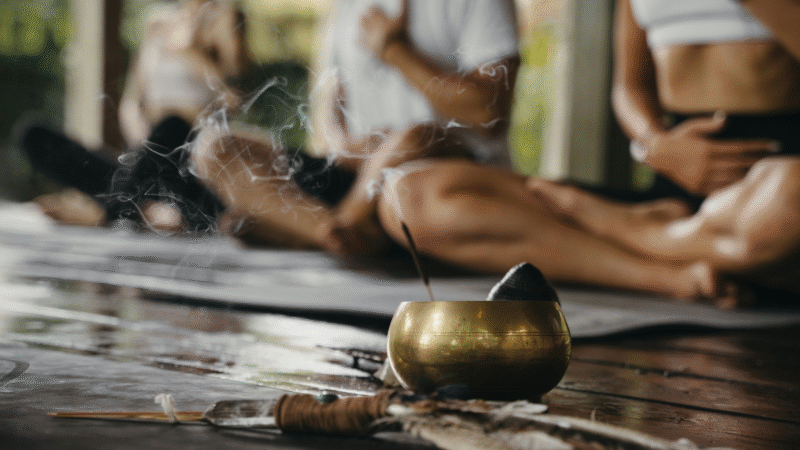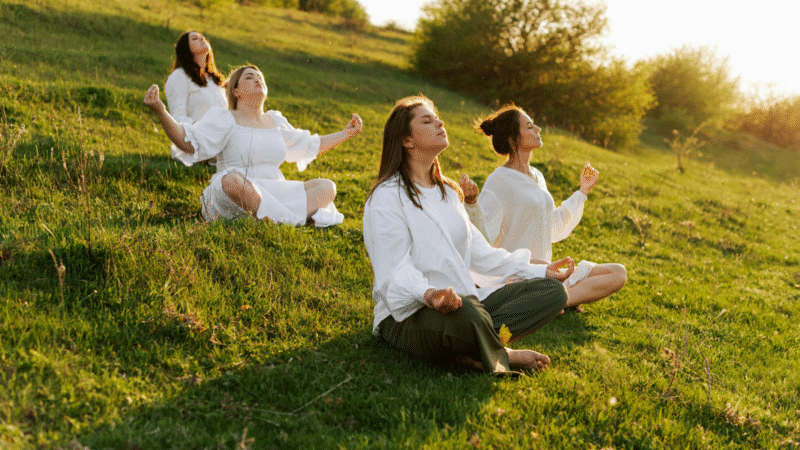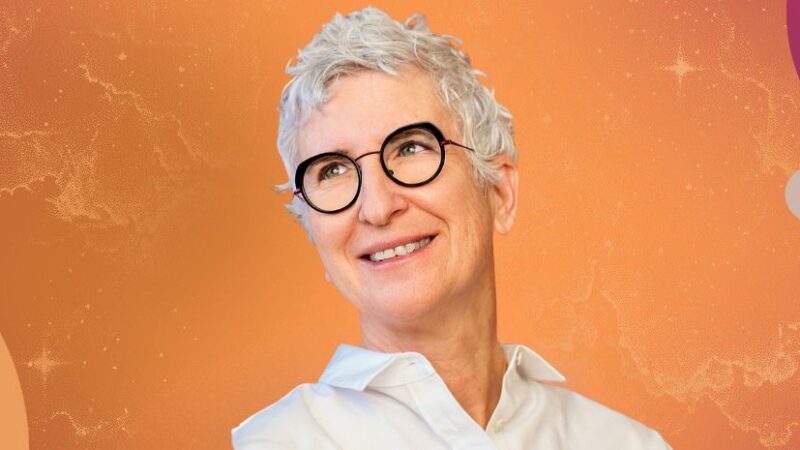Most of us will, at one moment or another, feel drawn to the question: What is spirituality? Rather than a lofty or distant idea, spirituality can be deeply personal, woven into the rhythm of everyday life. In a world pulsing with distraction, pressure, and constant demands, the search for meaning, connection, and presence can feel urgent, and, at times, elusive. To set the tone for this guide, we’ll explore what does it mean to be spiritual through lived experience, shared wisdom, and compassionate practice, walking as fellow travelers, not distant experts.
At Sounds True, our team sees spirituality as discovery rather than doctrine. The path invites a tuning toward the subtle signals that guide us back to ourselves and to one another. Along the way, we’ll clarify what does spirituality mean in day-to-day choices, relationships, and moments of quiet. For newcomers and long-time seekers, one truth remains: the longing for meaning, belonging, and purpose is universal.
Key Takeaways:
- Core Elements of Spirituality: Presence, purpose, and compassion form the foundation of spiritual life. Each quality strengthens awareness, deepens connection, and helps reveal what is spirituality as a lived experience rather than an abstract idea.
- Types of Spiritual Practices: Across cultures, people express spirituality through diverse traditions such as meditation, prayer, ritual, and community service. These practices reflect the universal search for meaning and belonging, showing what does being spiritual mean in everyday life.
- Tools for Inner Listening: Meditation, prayer, journaling, and mindful movement create space for self-reflection and growth. Through these practices, spiritual seekers cultivate presence and awaken to the quiet wisdom that guides all genuine transformation.
Core Elements: Presence, Purpose, Compassion
At the center of spirituality meaning lies three guiding qualities that illuminate nearly every wisdom tradition: presence, purpose, and compassion. These are not abstract ideals, but living experiences that shape how we breathe, listen, and relate to the world around us. Each one deepens what does spirituality mean in daily life and creates a foundation for meditation and awake awareness.
Presence
Presence calls us to arrive fully where we are. Through the gentle rhythm of breath, the warmth of sunlight on skin, or a single mindful pause, presence becomes a doorway back to ourselves. Rather than chasing peace, we learn to rest within awareness itself.
Meditation builds this awareness slowly. Every moment spent noticing thoughts or sensations without judgment helps quiet the noise that clouds perception. Over time, that clarity reveals what many teachers describe as awake awareness, a direct recognition of consciousness that is both still and responsive. Our reflection on what is awake awareness offers a glimpse into this state, where awareness begins to sense its own vastness. Presence prepares the ground for that realization, turning attention into communion.
Purpose
Purpose goes deeper than just chasing goals. Growing from the quiet knowing that life carries meaning beyond routine surfaces, purpose takes shape in simple gestures: an honest word, a shared meal, a moment of service. Each act aligns us with something larger, weaving intention through every day. Within meditation, purpose functions as the compass that keeps practice steady. Each return to breath or posture reaffirms why we sit—to awaken, to connect, to remember the inherent value of being alive. Moving beyond achievements, purpose becomes a steady pulse of devotion, guiding awareness toward understanding.
Compassion
Compassion ties it all together. To walk a spiritual path is to soften to both your own struggles and those of others. Compassion asks us to move beyond harsh inner critics and surface-level judgments, opening instead to care, even when it’s hard. Compassion acts like offering a hand, a kind word, or even simply holding space for another person’s experience. In these acts, we dissolve the barriers between self and other, sparking the deeper connection we all crave.
The core elements of presence, purpose, and compassion serve as guideposts. When we nurture them in ourselves, we awaken to life’s fullness, right where we are.
Types of Spiritual Practice Around the World
Across time and culture, spiritual practice has taken countless forms. Each tradition holds its own rhythm and wisdom, yet all share the same impulse: a longing for connection. These practices reveal what does being spiritual mean in everyday life and how presence, purpose, and compassion are expressed through action. Here’s a glimpse at some of the ways humans have nourished the soul throughout history and into modern times:
Meditation and Mindfulness
In many Eastern traditions, Buddhism, Hinduism, and Taoism, among them, meditation serves as a vessel for self-inquiry and awareness. For example, when sitting quietly or walking mindfully, practitioners observe thoughts and sensations without clinging or resistance. Each moment of stillness helps cultivate presence and steady the heart.
Shaped by these ancient traditions, modern mindfulness continues to grow. From yoga studios in Mumbai to Zen temples in Kyoto to quiet living rooms in New York, meditation offers a shared invitation to awaken consciousness. Our reflection on what is awake awareness explores this idea further, like how awareness itself can recognize its own spacious nature. In every culture where mindfulness flourishes, the essence remains the same: an open-hearted return to the present moment.
Prayer and Devotion
Prayer remains one of humanity’s most enduring languages of connection. In Europe’s stone cathedrals, voices rise in hymns that echo centuries of faith. Across the Middle East, the call to prayer ripples through the air five times a day, guiding communities into remembrance. In India’s temples, incense smoke swirls as offerings of flowers and light are made to the divine.
Across traditions, prayer expresses the same yearning to speak with something greater, to ask, to thank, and to listen. For many, prayer also becomes a form of meditation, a bridge between inner stillness and outer reverence.
Ritual and Ceremony
Ritual transforms ordinary moments into sacred time. In Japan, the tea ceremony invites grace through deliberate movement and mindful attention. In Native American traditions, the sweat lodge purifies the body and spirit through heat, song, and community. In Latin America, Día de los Muertos honors ancestors through food, candles, and marigolds that line the path between worlds.
These ceremonies, no matter how big or small, remind us that life is cyclical, not linear. By pausing to honor transitions, we acknowledge that every season, loss, and joy carries spiritual significance.
Nature-Based Spirituality
Many indigenous and Earth-centered traditions see the natural world as a living expression of spirit. Among the Māori of New Zealand, prayers called karakia bless the land and sea before any harvest. In the Andes, offerings of coca leaves and flowers are made to Pachamama, the Earth Mother, as acts of reciprocity. Across continents, elders and teachers continue to remind us that the sacred can be felt beneath our feet and above our heads. When we slow down and listen, we remember our place within a vast, breathing web of life.
Contemplative Arts
Music, dance, poetry, and creative expression have long been tools for approaching the divine. In Sufi circles, the whirling dance known as sema becomes a moving prayer that symbolizes union with the divine. In Bali, sacred dance and shadow puppetry tell stories of gods and ancestors, blending devotion with artistry. Through these practices, creativity becomes meditation in motion.
Community and Service
Spiritual practice is not always a solo venture. Across all faiths and traditions, community forms the heartbeat of spirituality. In Sikh gurdwaras, communal kitchens known as langars feed anyone who enters, embodying equality and compassion. In Buddhism, acts of dana, or generosity, sustain both giver and receiver. In countless local neighborhoods, volunteers gather to plant gardens, share meals, or comfort those in need. Within community, we can find purpose mirrored back through others’ hearts.
Meditation, Prayer, and Beyond: Tools for Inner Listening
At its essence, what does it mean to be spiritual is an invitation to listen and to turn inward toward the stillness that has always been there. Inner listening asks for gentleness, patience, and practice. Through meditation, prayer, and other contemplative rituals, we create space to meet ourselves fully and rediscover the guidance that arises from presence.
Meditation as a Path to Awareness
Meditation opens a simple yet profound doorway into stillness. Through conscious breathing or quiet observation, the mind begins to settle, and awareness starts to expand. In Buddhist and yogic traditions, meditation is seen as a training of attention.
Each moment of awareness draws us closer to presence. When the swirl of thoughts and emotions softens, the body learns to rest in a natural rhythm of calm alertness. Over time, meditation awakens the capacity for awake awareness, a spacious clarity that perceives life directly rather than through constant mental noise. For those curious to explore this experience more deeply, our reflection on what is awake awareness offers practical insight into this way of being.
Prayer as a Language of the Heart
Prayer carries the energy of connection. Across cultures and faiths, people lift their voices, hands, or hearts toward something greater, whether it be God, Spirit, the Universe, or simply the deeper Self. For some, prayer takes the form of spoken words or sacred chants. For others, it arises silently, as gratitude, longing, or love.
Through prayer, we enter a dialogue that transcends language. Each word becomes a vibration of intention, a reminder that we are participants in a living relationship with the divine. In this exchange, listening becomes as sacred as speaking. The quiet that follows prayer often holds the true response, one that arrives as stillness, warmth, or a quiet sense of knowing.
Beyond Meditation and Prayer
Inner listening can unfold anywhere. Journaling at dawn, tending a garden, moving through mindful yoga, or walking slowly through nature can each become an act of prayer in motion. These simple rituals draw awareness back to the body and the present moment, transforming ordinary routines into sacred pauses.
Across all traditions, these practices share a single heartbeat. Each time we pause, breathe, and listen, we reaffirm that spirituality is not about escape but about arrival. Through meditation, prayer, and mindful action, we return again and again to the quiet truth within us all: awareness itself.
Spirituality vs Religion: Finding Your Own Path
Across generations and cultures, people have turned to both spirituality and religion to seek belonging, purpose, and the sacred. While the two often intertwine, they invite distinct ways of approaching life’s mysteries. Understanding what does spirituality mean alongside religious devotion can open new space for growth, reverence, and unity within your personal journey.
How Spirituality and Religion Differ
Religion often offers a structure similar to a collective path shaped by faith, ritual, and tradition. Through sacred texts, ceremonies, and shared worship, religion nurtures connection through community and continuity. The framework it creates can help steady one’s heart through life’s highs and lows.
By contrast, spirituality blossoms through personal experience. Emerging from the inner landscape rather than formal doctrine, the essence of spirituality rests in lived awareness, like finding sacredness in silence, compassion in action, and clarity in the moment-to-moment flow of life. For some, this takes shape in meditation or prayer, but for others, through art, service, or communion with nature.
How Spirituality and Religion Can Coexist
Many find fulfillment where spiritual depth and religious tradition meet. The rituals, prayers, and stories within a faith can become vessels through which spiritual awareness deepens. A Sunday mass, a morning chant, or a shared meal of gratitude can each be moments where devotion and consciousness merge. For others, spirituality may exist outside formal religion while still honoring universal truths: love, compassion, humility, and service. When rooted in sincerity, both paths guide us toward connection.
Final Thoughts
So, what is spirituality? The answer unfolds as a lifelong discovery, an exploration of what brings you alive, whole, and deeply connected to yourself, to others, and to something greater. Spiritual life asks for presence rather than perfectionism, and each moment of stillness, joy, or challenge becomes an opening to listen, to feel, and to find meaning.
At Sounds True, we hold that spiritual wisdom belongs to everyone. Through every act of reflection, we remember that awakening does not happen far away. It begins here, within awareness itself. Each day offers a chance to meet life with curiosity, courage, and compassion. Wherever you find meaning through relationships, nature, creative expression, or silence, trust that this too is spiritual practice. Through this tender attention, your journey reveals what does being spiritual mean, a continual return to presence, purpose, and connection in the world around you.
Read More:
- From Stress Relief to Inner Growth: Exploring the Benefits of Meditation
- Mindfulness vs. Meditation: How Each Practice Transforms Your Mental Health
- Honey Tasting Meditation: Build Your Relationship with Sweetness
Frequently Asked Questions About Spirituality
Can you be spiritual without being religious?
Absolutely. Spirituality is a deeply personal experience, not tied to any one doctrine or set of rules. Many people find a sense of meaning, awe, or inner peace without belonging to a traditional religion. At Sounds True, we honor all paths, whether you find inspiration in sacred texts, time alone in nature, quiet meditation, or simply being present with loved ones.
What’s the difference between spirituality and faith?
Spirituality is your direct experience of connection, meaning, or wonder, often beyond words or belief systems. On the other hand, faith is typically associated with trust in something specific, such as a higher power, an organized set of teachings, or even in life itself. While faith can be a part of spirituality, spirituality isn’t limited by any set creed.
How does spirituality influence daily life?
Spirituality can infuse the ordinary with meaning. It’s not just about meditating on a mountain; it’s about how you greet your neighbor, pause to notice a sunset, or find calm amid chaos. Simple practices, like mindful breathing, gratitude, or compassionate listening, can bring your deeper values to life, unlocking a sense of presence and purpose one moment at a time.
What role does nature play in spirituality?
Nature is a living teacher. For many, it’s where spiritual presence feels most tangible, like the sheer wonder of a starry sky, the steadiness of ancient trees, the rhythm of the ocean. Time outdoors can reconnect us to something larger than ourselves, reminding us we’re part of an intricate, beautiful web of life. At Sounds True, we often celebrate the wisdom found in nature’s rhythms and cycles.
How does spirituality foster connection with others?
At its core, spirituality invites us to see the spark of humanity in everyone. Practices like deep listening, empathy, and kindness grow from our sense of inner connection. When we feel anchored within ourselves, we’re more open and attuned to those around us, helping lift each other, just as our community at Sounds True strives to do every day.
How can I integrate spirituality into my routine?
The simplest spiritual practices often fit naturally into daily life. Try starting or ending your day with gratitude, setting intentions, or taking mindful pauses—maybe even during a walk in your neighborhood. You might create a tiny ritual, such as lighting a candle or journaling your reflections. It doesn’t need to be grand; what matters is making space for what’s most meaningful to you.
How can I find my spiritual path?
The beauty of spirituality is that there’s no one-size-fits-all answer. Therefore, listen to your inner nudges, and don’t be afraid to explore, whether it’s different teachings, creative expression, time in nature, or joining a heartfelt community. At Sounds True, we’re here to walk alongside you, offering diverse voices and teachings so you can discover what resonates most on your journey.

Michelle Cassandra Johnson is an author, activist, spiritual teacher, racial equity consultant, and intuitive healer. She is the author of six books, including Skill in Action and Finding Refuge. Amy Burtaine is a leadership coach and racial equity trainer. With Robin DiAngelo, she is the coauthor of The Facilitator's Guide for White Affinity Groups. For more, visit https://www.michellecjohnson.com/wisdom-of-the-hive.












